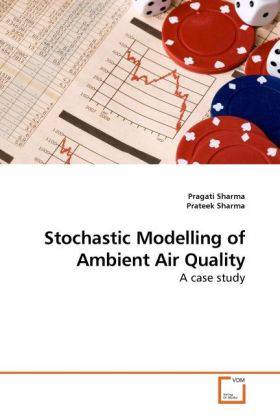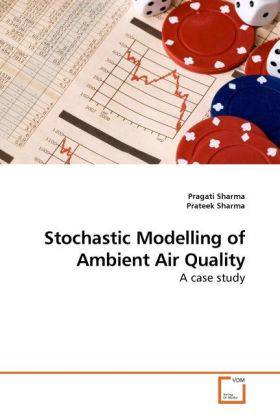
- Afhalen na 1 uur in een winkel met voorraad
- Gratis thuislevering in België vanaf € 30
- Ruim aanbod met 7 miljoen producten
- Afhalen na 1 uur in een winkel met voorraad
- Gratis thuislevering in België vanaf € 30
- Ruim aanbod met 7 miljoen producten
Zoeken
Stochastic Modelling of Ambient Air Quality
A case study
Pragati Sharma, Prateek Sharma
Paperback | Engels
€ 77,95
+ 155 punten
Omschrijving
The book presents a comprehensive analysis, assessment and prediction of overall ambient air quality using stochastic modelling approach. The application of various stochastic models has been illustrated with the help of a case study. The ambient air quality data of all criteria pollutants viz. SO2, NO2, SPM, PM10 and CO monitored at the seven monitoring stations has been modelled using stochastic modelling tools.The book provides details of identification and estimation of probability density function (pdf)models of all pollutants for different averaging times. The Rollback model, which depends on the pdf, has been used to estimate the percentage source emission reduction required to meet the national ambient air quality standards (NAAQS). The models have been used to evaluate the compliance with NAAQS and predict exceedance of standards at different locations in the control region for various pollutants. In addition, extreme value theory and Box-Jenkins models have been also used to analyse the ambient air quality data.
Specificaties
Betrokkenen
- Auteur(s):
- Uitgeverij:
Inhoud
- Aantal bladzijden:
- 376
- Taal:
- Engels
Eigenschappen
- Productcode (EAN):
- 9783639230956
- Uitvoering:
- Paperback
- Afmetingen:
- 220

Alleen bij Standaard Boekhandel
+ 155 punten op je klantenkaart van Standaard Boekhandel
Beoordelingen
We publiceren alleen reviews die voldoen aan de voorwaarden voor reviews. Bekijk onze voorwaarden voor reviews.











